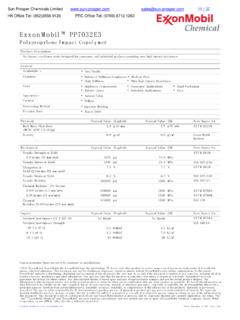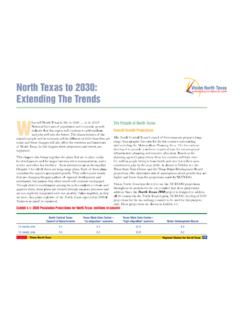Transcription of CLINICAL PROTOCOL and PROCEDURE
1 Page 1 PROSPERA CLINICAL PROTOCOL FAITH-CA Rev 6/3-17 CLINICAL PROTOCOL and PROCEDURE ~~~~~~~~~~~~~~~~~~~~~~~~~~~~~~~~~~~~~~~~ ~~~~~~~~~~ The art of Negative Pressure (Vacuum) Wound Therapy (NPWT) in the treatment of open wounds was first implemented in 1908. Negative pressure wound therapy modalities today have become highly advanced in order to offer the best protocols that may promote wound healing. PROSPERA introduces the PRO-I (retired), PRO-II and PRO-III series of negative pressure wound therapy pumps, an advanced technology designed to provide negative pressure to the wound site complemented by a variety of wound dressing options thus offering a complete customizable system. **The following information is recommended to provide the best implementation and management of the PROSPERA negative pressure wound therapy system.
2 ** WHO IS RESPONSIBLE? The medical provider (MD, DO, NP, PA) is responsible for determining the appropriate implementation and discontinuation of the PROSPERA negative pressure wound therapy system. The authorized caregiver (PT, RN, LPN-LVN, WOCN, ET, PA, NP, and DO, MD) is responsible for all wound dressing changes, monitoring progress, documentation and communication of the progress. PHYSICIAN ORDER An order requiring the initiation of the PROSPERA negative pressure wound therapy system must be submitted by the medical provider (MD, DO, NP, PA) and requires identification of the three principles of NPWT. Pressure, Wound Filler and Mode of Vacuum. Apply negative pressure wound therapy using variable pressure therapy (VPT ) settings of -80/-40 mmHg for time of 2 min on/2 min off or continuous pressure therapy Page 2 PROSPERA CLINICAL PROTOCOL FAITH-CA Rev 6/3-17 (CPT) at -80 mmHg with the dressing of choice (AMD Gauze, Black Foam, White Foam, Flat or Channel Drain) to sacral Stage IV 6 x 8 x 3 cm wound for 4 weeks starting 00/00/0000.
3 Dressing changes 3 x week. Last debridement 00/00/0000. The order must include the following: Start date and duration of treatment Wound location, size and type Date of last debridement Pressure settings {-80mmHg is recommended, psi greater than -125mHg is not recommended} Wound filler {black or white foam, AMD Gauze or drain type} Mode of vacuum {continuous (CPT) or variable pressure therapy (VPT )} Time settings (maximum/minimum) if using VPT. Frequency of dressing change Adjunctive dressing items (antibiotics, collagen, silver, etc.) INDICATIONS The PROSPERA negative pressure wound therapy system is indicated for the use of localized continuous or intermittent or variable negative pressure. The use of this therapy may promote wound healing by: maintaining a moist wound environment removing excess fluid (infectious and non-infectious) stimulating granulation by increasing vascular perfusion encouraging wound contraction protecting the wound from microbe imbalance The PROSPERA negative pressure wound therapy system is indicated for the following acute and chronic wound types Pressure Injury Diabetic/Neuropathic ulcers Venous Insufficiency ulcers Traumatic Post-operative and Dehisced surgical EXPLORED fistulas Partial Thickness Burns Skin Flaps and Grafts Full thickness and partial thickness wounds Page 3 PROSPERA CLINICAL PROTOCOL FAITH-CA Rev 6/3-17 CONTRAINDICATIONS The PROSPERA system is contra-indicated in the presence of.
4 Necrotic tissue with eschar present Unexplored or non-enteric fistulas Untreated osteomyelitis Malignancy in the wound Exposed nerves, arteries, veins, or organs Exposed anastomotic site PRECAUTIONS Precautions should be taken for patients who are or have: Difficult wound homeostasis* On anticoagulation or active bleeding* Monitor INR Close proximity of blood vessels, organs, muscle, and fascia requiring adequate protection. ** Irradiated or infected vessels and tissue Bony fragments Untreated Malnutrition Non-compliance Direct Spinal Cord injuries Circumferential dressing application Use near vagus nerve Patients requiring: o MRI o Defibrillation or o Hyperbaric chamber **WARNING** *Using Prospera NPWT (negative pressure wound therapy) on patients receiving Anti-coagulant Therapy (see pre-cautions). Consistent with all NPWT CLINICAL guidelines, direct use of NPWT on wounds of Anti- Co- agulated patients is PRECAUTIONARY and the responsibility of the Provider and Page 4 PROSPERA CLINICAL PROTOCOL FAITH-CA Rev 6/3-17 Caregiver.
5 If application is chosen, additional assessments skill and PROTOCOL is required. These additional assessments should be based on the patient s anti-coagulant status and stability, wound type, location and proximity to high risk structures such as vessels. NPWT Providers and caregivers should closely assess high risk patients (every hour depending on stability or per facility guidelines) for signs and symptoms of active bleeding and document per their facility PROTOCOL . Every measure of care should be implemented to prevent unwarranted bleeding. If active bleeding is observed, NPWT should discontinued immediately, unrelieved pressure applied to the bleed site and the facility policy should be implemented (such as calling 911 or primary Physician). The importance of educating the patient/family and team members of the increased risk cannot be under emphasized. Prospera recommends using the FDA Consumer Warning from February 2011 as a guideline/reference for writing facility policy.
6 **Using Prospera NPWT (negative pressure wound therapy) on organs such as heart, abdominal wounds with exposed viscera, vessels, and/or nerves. Again, consistent with all NPWT CLINICAL guidelines, direct use of NPWT is CONTRAINDICATED on exposed organs, vessels, and nerves. If application of NPWT is chosen, it is recommended that exposed organ(s), viscera, vessels, and nerves not have NPWT applied directly without a protective covering. **Direct application of NPWT to the heart, lungs, or bowel without a protective layer may cause organ rupture and death. If the viscera of the abdomen does not have a covering of omentum, intact fascia, granulation tissue, muscle, or mesh (used to repair abdominal hernias), it must be protected with multiple layers of fine-mesh non-adherent gauze. The fine-mesh non-adherent gauze must be used to cover the exposed soft structures prior to the application of the Prospera gauze or foam dressing.
7 If the pericardium of the heart or pleura of the lung is exposed, direct application of NPWT should not be used without a semi-rigid protective layer. Ie. HeartGuard NOTE: The maximum recommended size of visceral/vessel/nerve exposure to be treated by the Prospera NPWT will not exceed 15cm x 20cm. Alternate treatments should be considered if the exposure exceeds these dimensions. Page 5 PROSPERA CLINICAL PROTOCOL FAITH-CA Rev 6/3-17 ** OPTIMIZING OUTCOME TIPS 1 Successful wound healing is dependent upon many variables. CLINICAL guidelines are available to help you achieve the highest rate of cost effective wound closure outcomes. Wounds that have been recalcitrant to standard wound care protocols, wounds expecting to take months to heal and wounds of large depth and drainage are good candidates for PROSPERA negative pressure wound therapy. 2 Optimizing the variables is essential.
8 Co-morbid conditions must be brought close to normal parameters. Adequate blood flow, edema reduction, microbe control, glucose management, and adequate nutrition cannot be over emphasized. 3 Wounds must be debrided as completely as possible of all eschar and slough to avoid slow healing. 4. Pressure injury requires off-loading from direct surfaces. This may include a variety of mattresses, pads, and orthotics to avoid undue pressure at the dressing site. 5. If it is necessary to disrupt the negative pressure therapy environment for the purpose of dialysis, rehabilitation, ambulation, etc., you may do so but remember to keep the time off the negative pressure wound therapy system to a minimum of 4 hours or less especially if the wound is highly exuding. If using Black Foam, a 2 hour minimal interruption is standard PROTOCOL . Interruption beyond this 2 or 4 hour window requires a dressing change due to the lack of microbial control and fluid removal thus an increased risk of infection and or maceration.
9 6. Aggressive wound cleansing with non-cytotoxic solutions should be performed prior to the dressing application. Routine dressing changes should be two to three times a week or sooner based on the volume of exudate. Infected wounds should be changed every 24 to 48 hours until microbial control is achieved. 7. Inspect the dressing frequently. The dressing will have a collapsed appearance if there is adequate negative pressure and an intact seal. Do not allow the Green Screen operational mode to be a replacement for wound dressing assessment and good nursing care. 8. Monitor the wound and peri-wound for signs and symptoms of infection. Document erythema, fever/warmth, edema, tenderness, induration, purulent exudate, and strong odor. Depending on the status of the wound the medical provider may choose to temporarily discontinue the negative pressure wound therapy. Page 6 PROSPERA CLINICAL PROTOCOL FAITH-CA Rev 6/3-17 9.
10 Careful removal of the dressing will prevent unnecessary damage to new granulation, epithelium and the intact periwound. If needed, apply sterile water or normal saline into the gauze or white foam dressing and allow it to soak 5-10 minutes, and then gently remove from the wound. Black foam does not absorb fluid and requires mechanical removal by hand. Try to avoid removal of granulation tissue that may have ingrown into the black foam. Pain and bleeding may occur with removal. 10. Discomfort can occur with any wound. Some patients may require medication prior to the dressing change. The non-adherent layer reduces the risk of dressing adherence. The moist woven gauze environment prevents in-growth of granulation into the gauze. If needed, topical 1% Lidocaine may be applied to wounds prior to dressing application and removal for sensitive wounds. MONITORING THE WOUND 1 Wounds receiving their first dressing with NPWT application should be monitored frequently every 6-8 hours for the first 48 hours.





